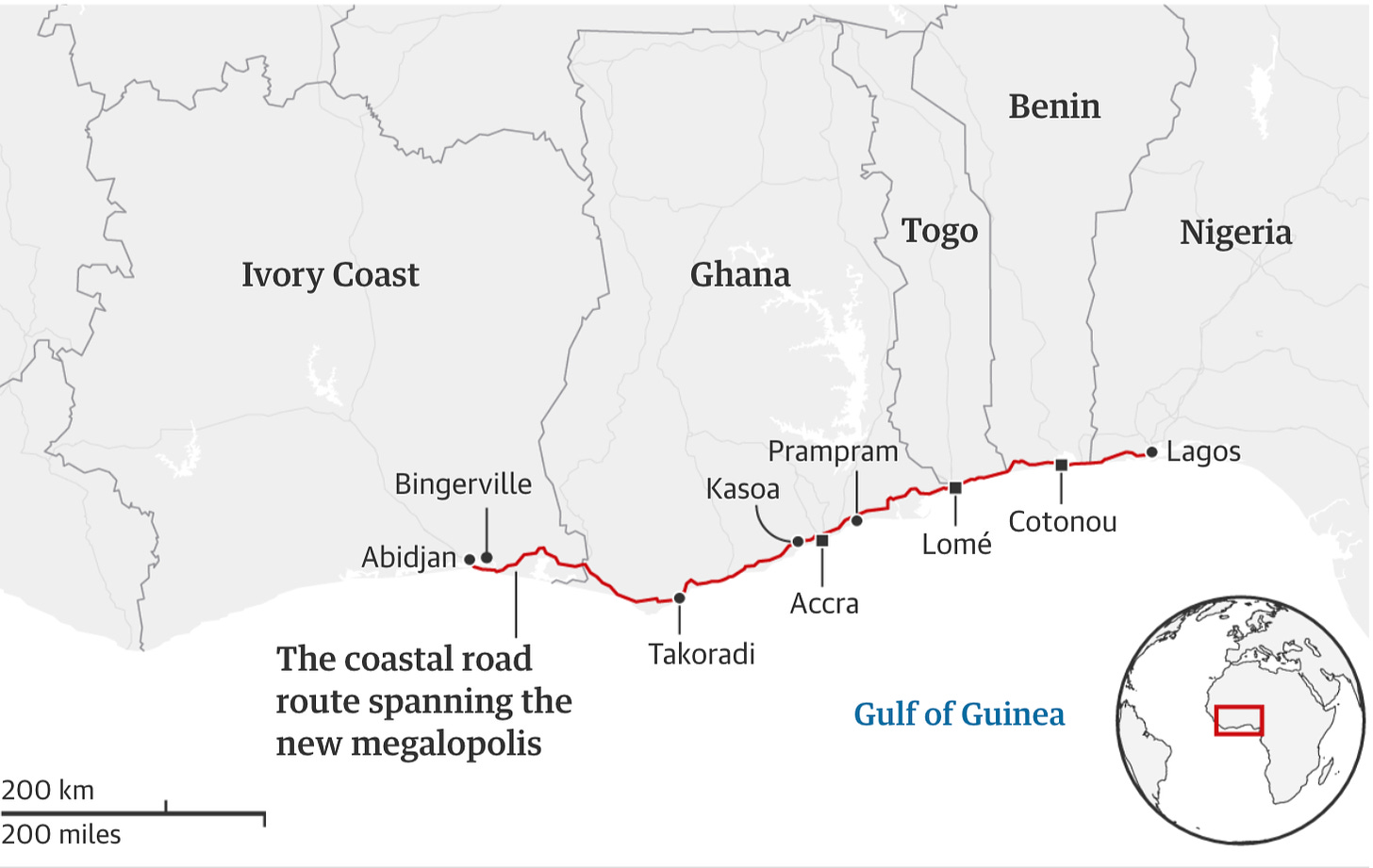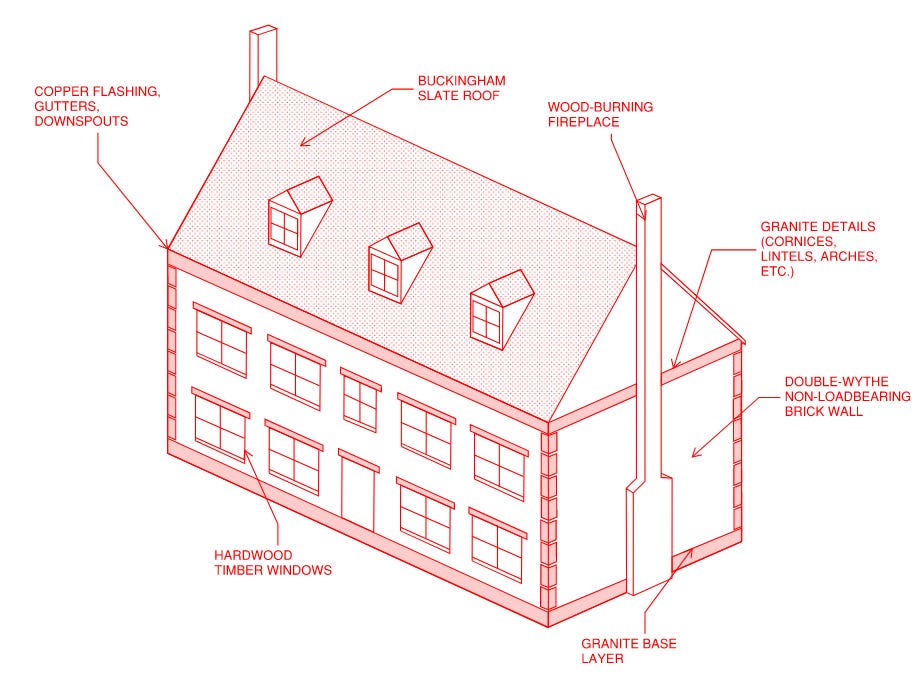Megalopolis & Crypto-Cities
A weekly collection of stories about infrastructure around the world
1. The Coming West African Megalopolis
One 600-mile stretch of land from the Ivory Coast to Nigeria is on track to become the largest metropolitan area in the world, with a projected population of 51 million by 2035. This is equivalent to the population of the North East corridor in the United States. The difference is that Africa’s population growth is nowhere near plateauing.
Today, Africa has 1.4 billion people. By the middle of the century, experts such as Edward Paice, author of Youthquake: Why Africa’s Demography Should Matter to the World, believe that this number will have almost doubled. By the end of this century, the UN projects that Africa, which had less than one-tenth of the world’s population in 1950, will be home to 3.9 billion people, or 40% of humanity.

A select group of the uber-rich are planning an exclusive city to be located god knows where and completed god knows when, but definitely with money from Peter Thiel and the Winklevoss twins. The website for the future city, named Praxis, looks as dystopian as its “Master Plan” reads; and efforts to penetrate the group by journalists have been largely unsuccessful due to the NDAs participants are forced to sign.
The city itself was inspired by the freedom Covid-19 offered with remote work. It will be made up of vetted and willing participants who can sign a contract requiring a “financial commitment.” The economy would, unsurprisingly, be entirely built on crypto.
Curbed journalist Nevin Kallepalli impressively infiltrated a meeting in June and masterfully painted a picture of uncertainty. Questions like will there be schools? Will there be a constitution? and more fundamentally, where will this city be located and will it involve displacing people? were answered vaguely, if at all.
In case you are really committed to setting roots in [insert suburb here] and are very concerned about [insert natural disaster here], these are some key components for how to build a house that will outlive the state of Florida.
Unreinforced concrete is better than reinforced (corrosion issues)
A lot of steel
Masonry bricks
Slate roof
But the more important question is should a home even be designed for 1,000 years?
Should permanence ever be the goal? Or as sea-levels rise, fires rage, and droughts hit places previously immune to heat, maybe we should all be putting our houses on wheels.
Kenya will receive US$800 million from the multilateral development bank, African Export-Import Bank (Afreximbank), for climate adaptation. The funds will go towards building 100 dams to assist areas struggling with water shortages. It will also be used to double irrigated land area from 670,000 acres to 1.4 million acres in the next three years. This allows more of the country to increase food production without relying on rainfall.
The 800 million is just one part of a US$3 billion package to help with infrastructure, agriculture, housing, and MSME (micro, small, and medium-sized enterprises). These funds mark the launch of the Afreximbank Climate Change Adaptation Facility, which is a five-year project that aims to raise and disburse over US$5 billion leading up to 2026.




Fascinating!